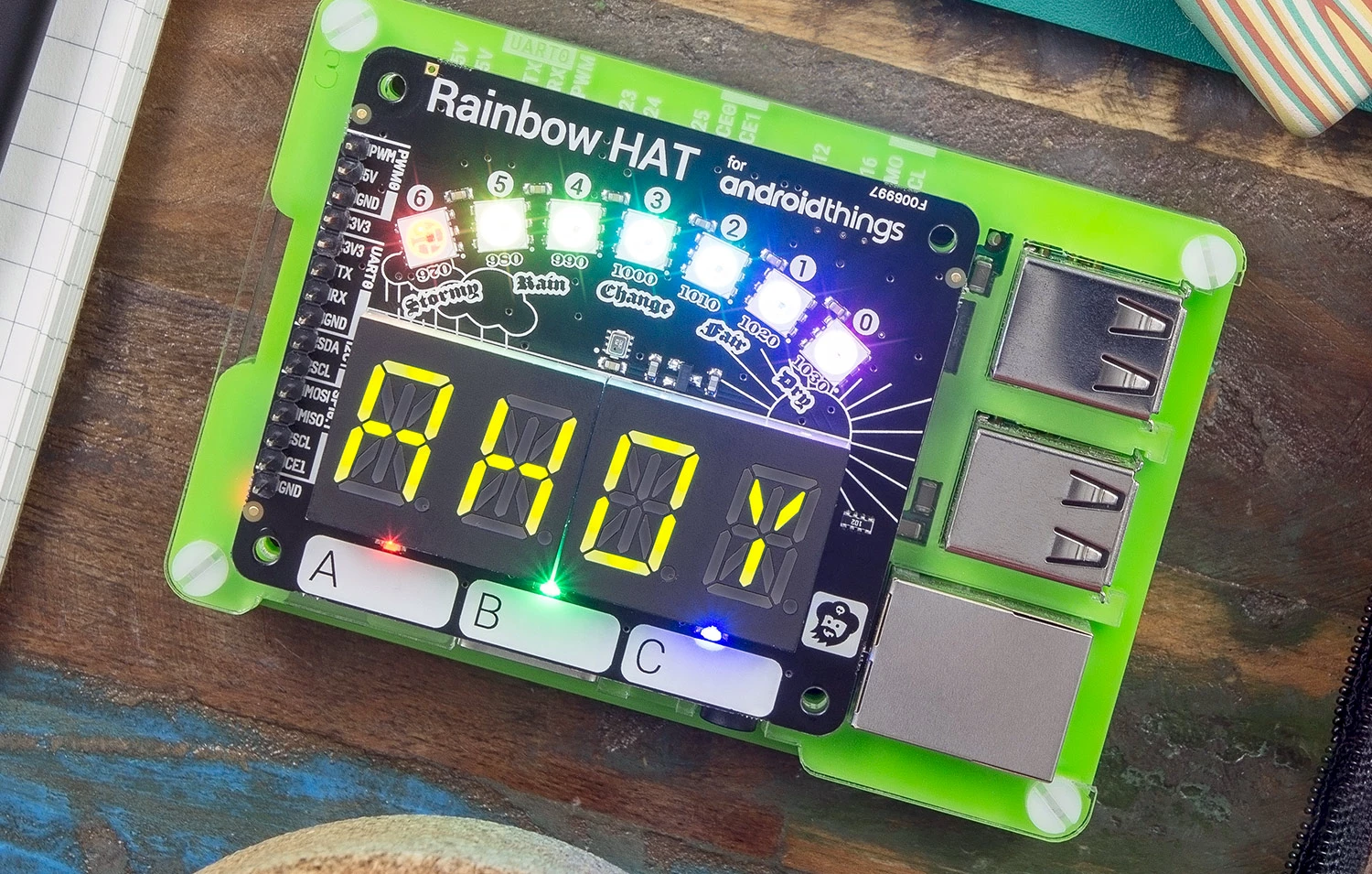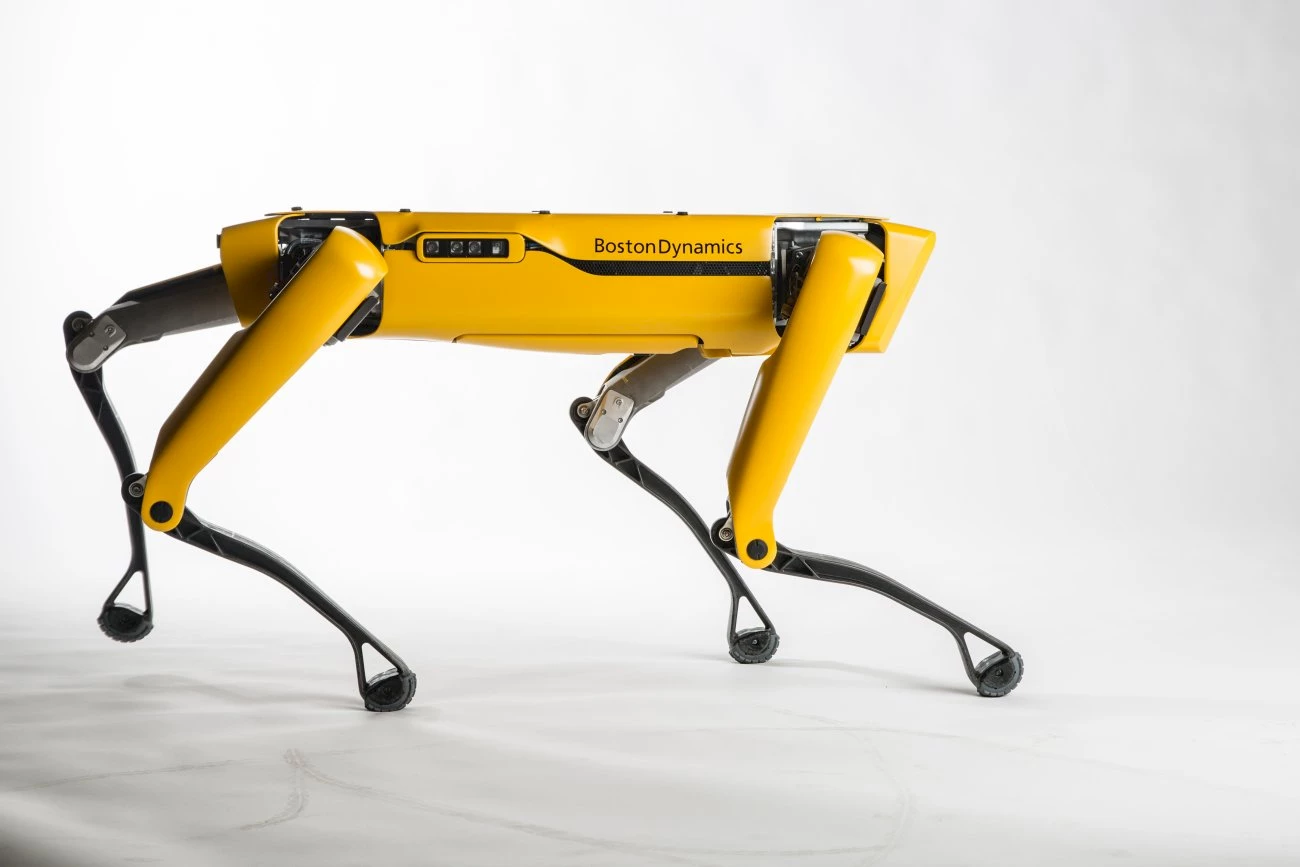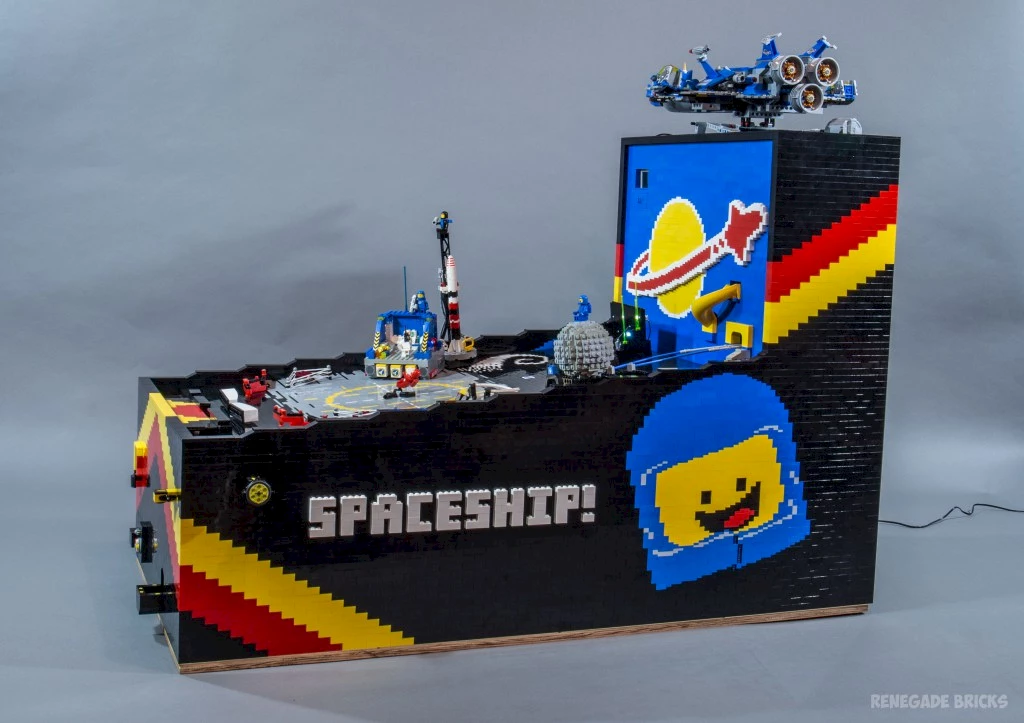Weekly Tech Recap - № 167 - Android Things, ZTE, Atlas and SpotMini, Benny’s Spaceship Adventure, Rubik’s cube

Android Things 1.0 official launch

The Android Things Rainbow HAT from Pimoroni. © Pimoroni Ltd.
During its annual developer conference, Google officially announced the launch of its Internet of Things platform. Like Android TV, Android Automotive or Wear OS, Android Things is a version of the Android operating system specifically designed to work on connected devices, which don’t really need a full user interface like you would for a smartphone or a laptop. You could say that Android Things is a super-light version of the OS. Google’s solution is unique as it comes with a centralized update mechanism, which is important as it guarantees the security of the connected device. With Android Things, Google, rather than the device developers, is responsible for sending the new updates. This ensures that each time a new Android security patch is released, it is automatically sent to Android Things devices (in contrast to the delays for Android phones, which are often considerable). Developers will be able to manage software updates for fleets of connected devices using an online interface dubbed Android Things Console. The downside of this system is that only Google-approved hardware platforms are able to use Android Things. For the 1.0 version, only NXP i.MX8M, Qualcomm SDA212, Qualcomm SDA624 and MediaTek MT8516 Systems on Models (SoMs) are supported. For prototyping only, the NXP i. MX7D and Raspberry Pi 3 Model B can be used. For each device, Google is offering three years of free updates. Its pricing model still isn’t clear, nor is it clear what exactly will happen after three years.
⇨ Ars Technica, “Android Things 1.0 launches, Google promises 3 years of updates for every device.”
ZTE, first casualty of US trade war

Chinese phone manufacturer ZTE Corporation, which was founded in 1985 and employs 75,000 people, has announced it’s shutting down operations, and is likely headed for bankruptcy, unless there’s a drastic turnaround from the Trump Administration. ZTE is the second largest player in the smartphone market in China, after Huawei, and the fourth largest in the US.
Operations at ZTE became impossible following a US government decision banning the export of technology to this manufacturer. ZTE relies heavily on American-made components, especially Qualcomm chips. According to Reuters, software aside, at least 25% of ZTE phone components come from American companies. The export ban also includes Google’s standard suite of Android applications (including Google Maps and Play Store). Last year, ZTE admitted to developing a plan to sell American technology to Iran and North Korea, in violation of American sanction laws. ZTE paid $890 million in penalties, and said it had punished the guilty employees and handled the issue. Last month though, the Trump administration accused ZTE of continuing to lie to the American government, claiming that company management hadn’t punish the guilty employees.
The other major smartphone manufacturer, Huawei, has had a tough time making deals with American phone operators, due to pressure from American regulators worried about national security.
⇨ Ars Technica, “The Trump administration just forced smartphone maker ZTE to shut down.”
The latest robot news on Atlas and SpotMini

SpotMini 2017. © Boston Dynamics.
Today, Boston Dynamics released two YouTube videos showing the progress made by its Atlas and SpotMini robots. SpotMini’s is more interesting: you see the four-legged bot cruising around autonomously on a designated route across an office and a laboratory. Prior to the test, the robot is manually driven over the space so it can create a space map using visual data from the cameras mounted on its front, back and sides. During the autonomous run, SpotMini uses its camera data to locate itself on the map and to discern and avoid obstacles. Once the user hits “GO” at the start of the video, the robot is left to fend for itself. The total time for this jaunt is a bit over six minutes (the QR codes visible in the video are used to measure performance, not for navigation).
⇨ Circuit Breaker, “Boston Dynamics’ robots are learning how to run outside and navigate autonomously.”
Pinball machine made from Lego

Benny’s Spaceship Adventure. © Renegade Bricks.
Benny’s Spaceship Adventure is a fully operational pinball machine, built with over 15,000 Lego bricks, by Lego super-fan Bre Burns. Every single piece of the game (except for the plywood to transport it) is made from official Lego pieces: official Lego rubber bands in the bumpers, Lego LEDs, and even the power sources (Lego Power Functions battery box or a Lego Trains speed regulator plugged into an outlet). Three Lego Mindstorm NXT programmable bricks connected over Bluetooth control the scoring, sound and electronics; touch sensors, colour sensors, light and ultrasonic sensors provide a number of different ways to interact with the ball. The game logic was entirely programmed using native NXT-G environment.
⇨ The Brothers Brick, “Working LEGO pinball machine built from 15,000 bricks features Benny in all his Classic Space glory.”
⇨ Ars Technica, “A functional pinball machine made entirely from Lego bricks.”
4.22 seconds: new world record for Rubik’s cube

Rubik’s cube. © iStock.
A new world record for the Rubik’s cube has been set by Feliks Zemdegs, who solved the cube in 4.22 seconds. This isn’t the first world record for the 22-year old professional “speedcuber” from Australia – he previously won the world record at 4.73 seconds back in 2016. This year he stepped up his game, winning his title back from an American called Patrick Ponce. But no matter how unique your name, or how nimble your fingers, at the end of the day a machine, not a human, will always wear the real Rubik’s cube crown.
⇨ CNET, “A man called Feliks Zemdegs smashed the Rubik’s cube world record..”
